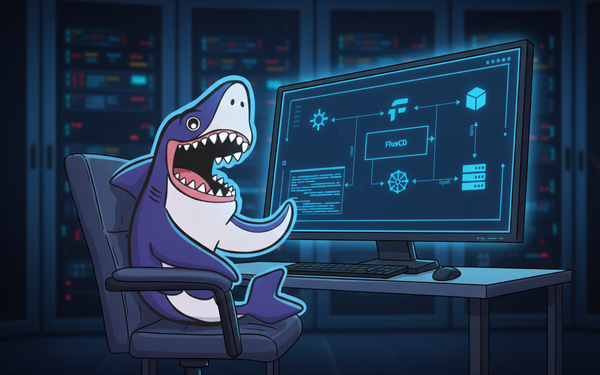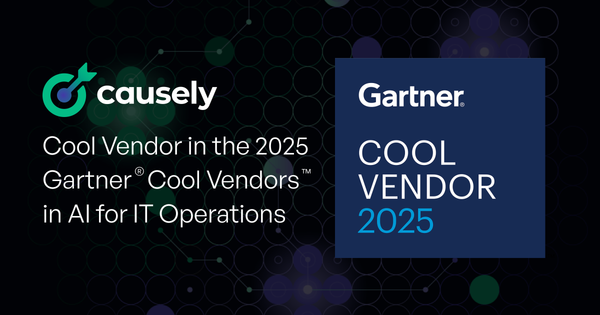Introducing Causely’s MCP Server for Automated Remediation in Kubernetes and Beyond
The Causely MCP Server brings our Causal Reasoning Engine directly into the IDE so engineers can understand why incidents happen and apply the right fix at the right layer, whether that’s runtime, configuration, or code.

Today, we’re releasing the Causely MCP Server. It brings our Causal Reasoning Engine directly into the IDE so engineers can understand why incidents happen and apply the right fix at the right layer, whether that’s runtime, configuration, or code.
The Problem: Complexity Hides the Real Issue
Kubernetes gives teams the power to scale fast, but it also introduces new layers of complexity. Services contend for memory. Pods get evicted. DNS queries slow to a crawl. When something breaks, symptoms often show up far away from the real cause.
A latency spike might surface at an API gateway, but the actual issue could be a congested message queue. Pod evictions might trace back to a misconfigured limit in a different service. Engineers end up chasing alerts, patching downstream effects, and firefighting without ever fully closing the loop.
In systems like this, even well-intentioned remediation often lands in the wrong place. The action isn’t wrong; it’s just applied to the symptoms, not the cause.
How Causely Approaches This
Causely was built for distributed systems where problems propagate in non-obvious ways. It is designed to understand cause and effect across services and layers of the stack.
At the core is a Causal Reasoning Engine (CRE) that applies domain-specific causal models to real-time telemetry. It maps causes to the symptoms they cause with high precision. It understands how services interact, how constraints emerge, and how changes ripple through the environment. This allows it to pinpoint the cause of service degradations, even in noisy environments where symptoms may be missing or spurious.
Once the cause is pinpointed, Causely drives resolution at the appropriate layer, whether that’s a runtime adjustment, a configuration change, or a code fix.
Closing the Loop with the MCP Server
The new MCP Server connects this reasoning engine directly to the developer workflow. Through integrations with MCP-compatible editors like Cursor and Claude, Causely now:
- Generates upstream patches to Terraform, Helm charts, or application code to prevent the same issue from recurring.
- Remediates runtime issues in Kubernetes automatically, including CPU starvation, noisy neighbor interference, and memory exhaustion.
- Delivers these remediations directly into the IDE for review, approval, or refinement, with full causal context.
This isn't about writing scripts or building brittle rules. Causely analyzes the environment in real time and proposes the correct remediation for the right layer.
Example: Slow Database Queries
Let’s say your service slows down due to database query latency. Most tools might point you to the spike. Causely uses its CRE to map causes to the symptoms they cause, like a slow-running query may cause elevated latencies across multiple HTTP paths. It combines observed signals with domain-specific causal models to deterministically infer the cause of the observed symptoms. The MCP Server then surfaces the recommended fix directly in your IDE, with full causal context.
Remediation, Where Engineers Work
The MCP Server brings this reasoning and remediation into the tools engineers already use. There’s no jumping between dashboards, terminals, and editors to track an issue from signal to fix. Everything happens in place, with the right context.
Whether you’re using Cursor, Claude, or any MCP-compatible editor, Causely now provides inline, explainable remediations. Developers can fix what’s broken—runtime, config, or code—without jumping between tools or digging through dashboards.
Here’s another look at how this works in practice. Causely identifies a CPU resource contention issue that’s degrading multiple services, traces it to a misconfigured Helm value, and proposes the corrected setting—delivered directly into the IDE via the MCP Server.
Built for Complex Systems; Kubernetes is Just the Start
We’ve focused first on Kubernetes because it concentrates so many reliability challenges in one environment: ephemeral workloads, misaligned configurations, and distributed dependencies. But the underlying problems we solve go beyond the cluster.
Whether the root cause lives in your service mesh, Terraform plan, or application code, Causely’s causal model surfaces it, and delivers the fix where it matters. Kubernetes is one environment we operate in. The goal is broader: to make reliability engineered, not reactive, across every layer of modern software delivery.
See It in Action
If you’re attending KubeCon North America, come see it in action at Causely Booth #1661. We’ll show you how Causely detects what’s wrong, explains why it’s happening, and remediates it, right where the fix belongs.
And if you’re ready to explore more on your own, start here: https://docs.causely.ai/ask-causely/mcp-server/




